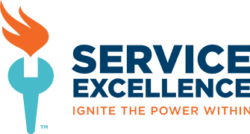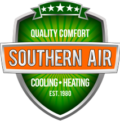Blog
How To Use The Key Result Area and Accountability Form in Your Business
By Service Excellence Training • How To Use The Key Result Area and Accountability Form in Your Business
The Key Result Area Document is one of the most simple, and powerful forms you can utilize in your business.
You will be able to copy a download of the document for your own use. I recommend downloading the document before watching the video – that way you can follow along.
Video: How-To Use the KRA and Accountability Form
What is the key result area (KRA)?
This a little bit different from some forms that you’ve seen in the past because this one focuses on what we believe is a result and action that your people can achieve.
The KRA form that you can see here was written with the help of one of my clients. We sat down and we began to just talk about the things he wants to see happen in his plumbing company. And to keep it simple, we came up with four primary categories. The idea behind all these standards is that they should be very easy to understand.
- Plumbing standards
- Customer service standards
- Revenue standards
- Paperwork standards
Pro Tip: Keep it Simple
Now, you can change these up. In this example, we have plumbing standards – you might want to switch that up if you’re not a plumbing company. You can modify these to be whatever you want, but I encourage you to keep it super simple.
For example, be on time and ready to go to work by 7:30 am. If you’re on time, that means you’re there before 7:30 am. If you’re ready to work, that means you’re ready to go. If you want to explain concepts such as what it means to be “on time”, do it in a separate document. Keep your KRA form to one page so it forces you to create clarity inside of your company.
KRA Forms Outline Minimum Standards
Now let’s take a look at our revenue standards. You see a call close rate of 80%. That is not an amazing dynamic close-ratio, nor is an average ticket of $350, or a monthly goal of 30,000 and a minimum monthly revenue (or a club conversion or service agreement, if that’s what you call them) of 25%.
None of these are dynamite dynamic numbers, but you need to understand what they are. They are minimum result standards, which is to say that if you were to use this document in a pre-hire situation, you are communicating in the beginning that new hires must hit these standards in order to stay on the team.
And the reality is, a lot of companies would be happy and successful if they could have these minimum standards and revenue. For other companies, this minimum standard may be too low. So remember, this is the minimum standard. This is not what your best guy is going to be doing and it’s not necessarily an individual’s personal goals.
Committing to the Standard With New and Existing Employees
Down at the bottom of the form, it says “make it real.” This is where you get your technician to commit. You will put down the name of your company, the date, and then you’ll give them an opportunity to achieve these goals by a certain period of time. Personally, I recommend 90 days.
So if you’re pretty hard, and they basically have 90 days to get up to speed – and that includes your training period. That’s the period of time in which your employee is going to get good at all these things listed in the KRA form. With my recommendation of a 90-day trial period, you should know by the end of the period if a person is able to accomplish this.
Now, if you have techs that have never been on the standard, I also recommend a period of 90 days from the day that they agree to the KRA. Once they complete the 90-day period, they will be held accountable to the agreed-upon expectations.
Bonus: The Accountability Form
I’m going to give you a bonus tool as well. I’m actually going to show you our accountability tool, and this will go hand-in-hand with the KRA. Similar to the KRA form, you will see sections for plumbing standards, customer service, revenue, and paperwork. And you can change this up if you want to make it a five-violation policy or a three. My recommendation: Don’t go past five. At that point, you’re just tolerating too much.
Here’s the official violation policy that we came up with.
- The first one is a verbal warning. This is where you communicate to them that they are receiving an officially verbal warning.
- The second one is a written warning and an offer for additional training. Remember, almost every problem in your company can be fixed with additional training.
- The third one is the removal of privileges and responsibility.
- The fourth violation is suspension or dismissal.
When it comes to outlining additional training, you can document that in a separate form somewhere else. And then the fourth violation is suspension and or dismissal. I strongly recommend that you follow these approaches and don’t cave in on one area because nothing will be real after that.
Now if you want to know how these guidelines work together, we created the guideline of accountability at the bottom, which goes as follows:
- The key result area is the Golden Standard. You should be doing this. Working in the KRA Zone puts you in the safe zone.
- The Danger Zone is anything less than the KRA Standard.
- Time allowed in the Danger Zone: You are allowed a maximum time of 90 days in the Danger Zone before you face suspension or dismissal.
The first 90 days is a launch period for employees to make sure they learn how to abide by the Golden Standard. Once they have moved beyond the launch period and are in the operations period, that is when you hold them accountable to all of these standards and will either be put in the KRA Zone or the Danger Zone.
You may choose to escalate this more than 30 days if you don’t want to wait so long. But with KRA standards, we’re talking about revenue standards rather than ethical issues. If your employee is working and they’re trying, then 90 days is perfectly legit.
Improving Performance With Training
I’ll warn you, even if they’re great guys, all people deserve help. So if you get to the end of the first 90 days and no one is hitting your KRA standard, either that’s a training issue or you’re not being realistic about what your company KRA should be. Either of those problems is something that we can help with either through classroom training or through our business consulting services. You can even apply for a free strategy session and I can help you there.
Using These Documents For Your Company
Feel free to use these documents in your company, I only ask one thing: Don’t share these with other companies. If other companies want them, let them come and ask me and I’ll be happy to give it to them.
You can also put the name of your company down at the bottom, but leave the copyright for Service Excellence Training. Intellectual property is something that we take seriously. We’re happy to share it, but we don’t want to lose it.
What SETs Us Apart?
Proactive Business Plans
A proactive business is a successful business. That's why our team takes the time to make sure every client has a proactive, not reactive, business plan. Our strategies make your business run more smoothly and profitable.
Proven Results
Our training services help businesses identify and achieve their key performance indicators (KPIs). Whether it's increased revenue or higher satisfaction rates, our methods allow you to see immediate and continued results.
Personalized Training
Our team of experts works hard to make sure your business gets personalized training. We'll work with your team one-on-one or in group settings to set and achieve your business goals. We develop training based on your goals!
Prioritizing People
We believe that people are the most valuable asset. We strive to provide outstanding benefits, life balance, leadership, and support to our team. We believe in helping people reach their greatest level of growth, contribution and satisfaction.

Trusted By
Business Ignition
SPARK
Classroom Training
Resources
Company

Join our newsletter











